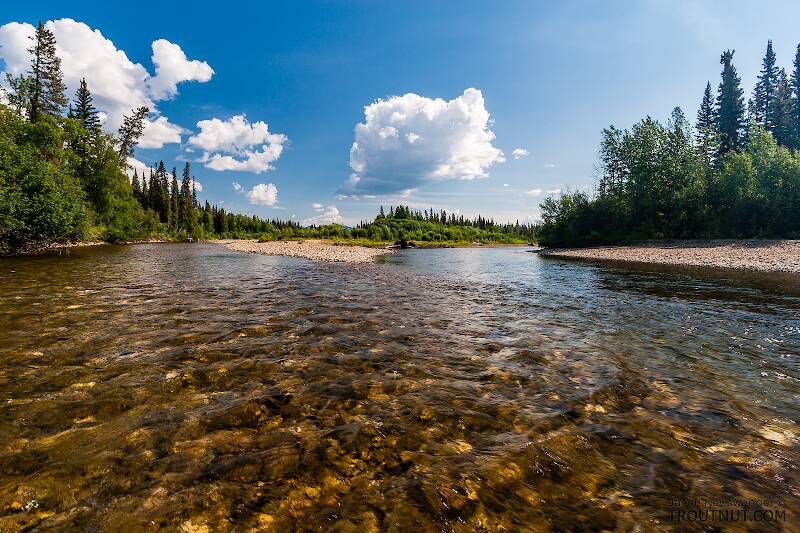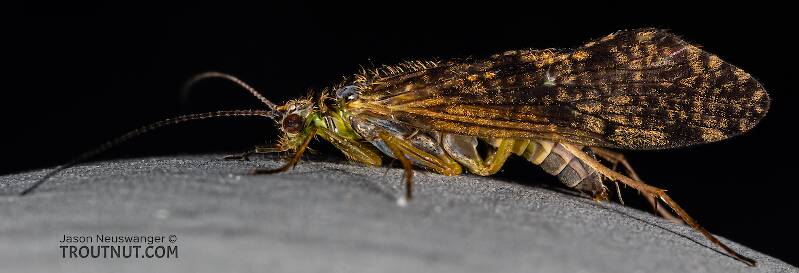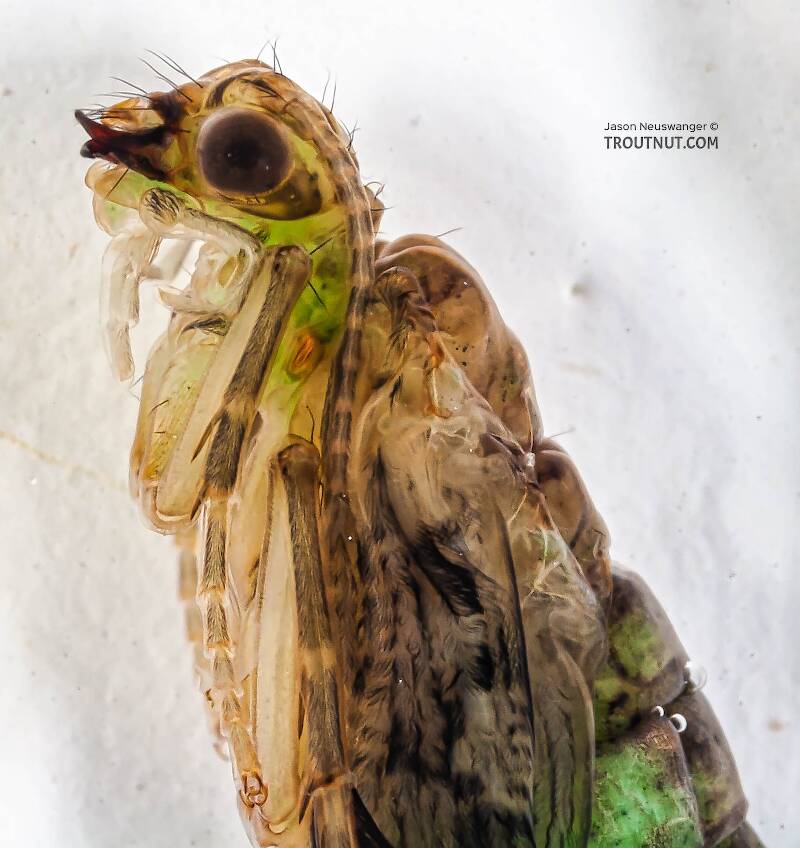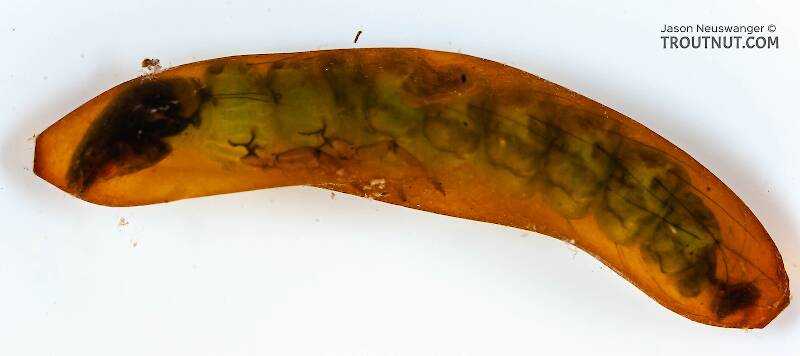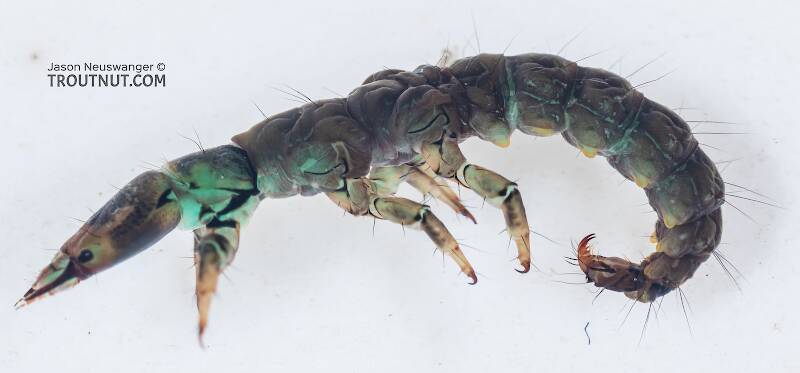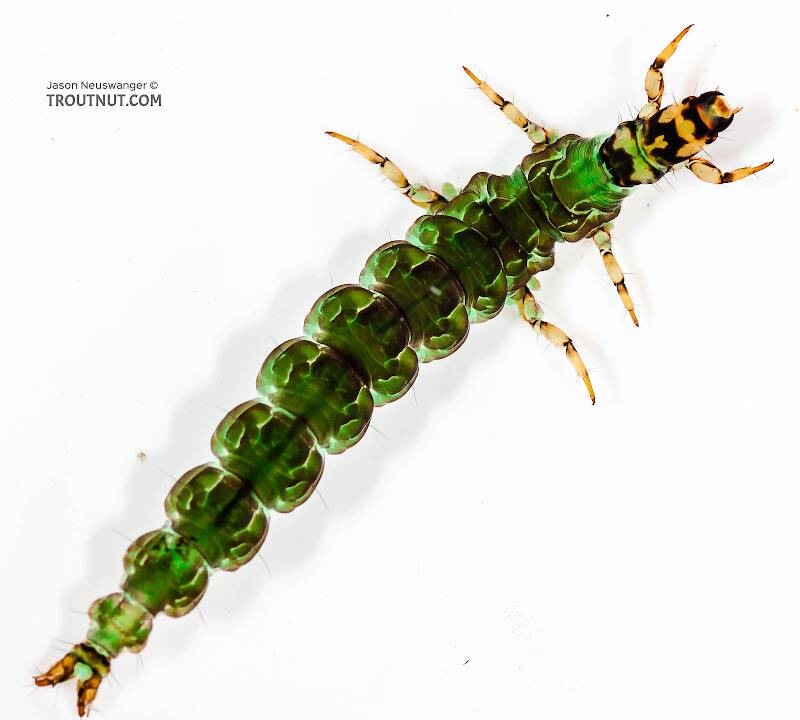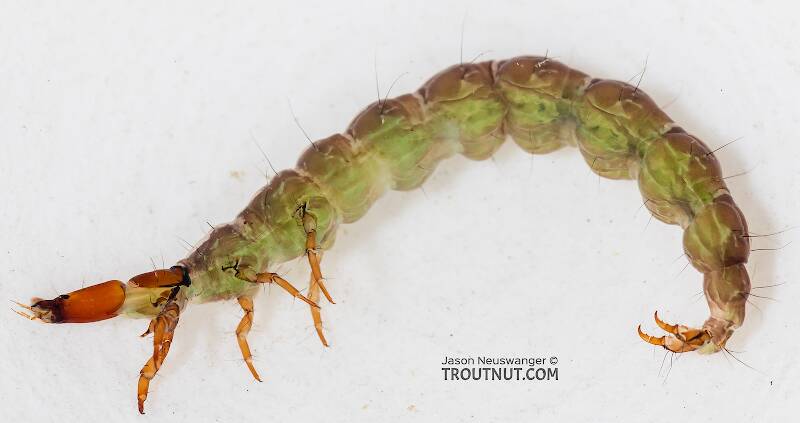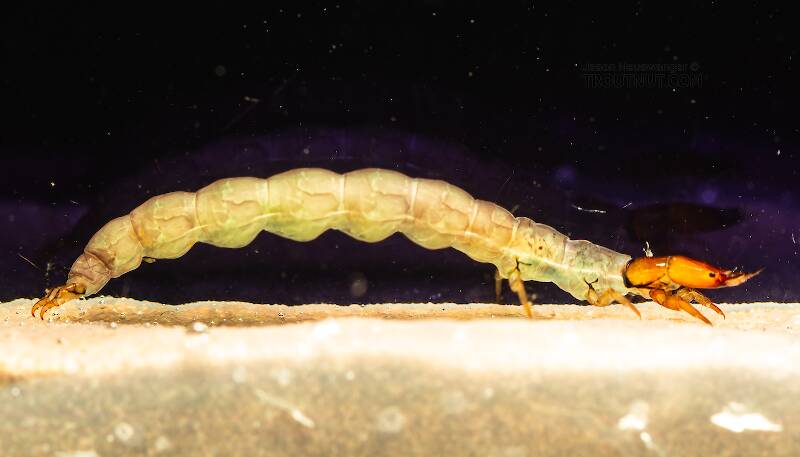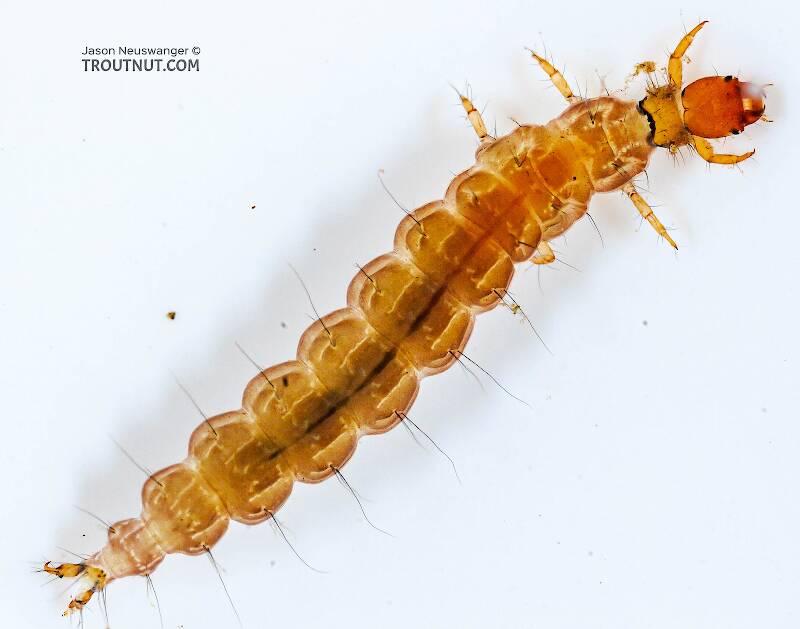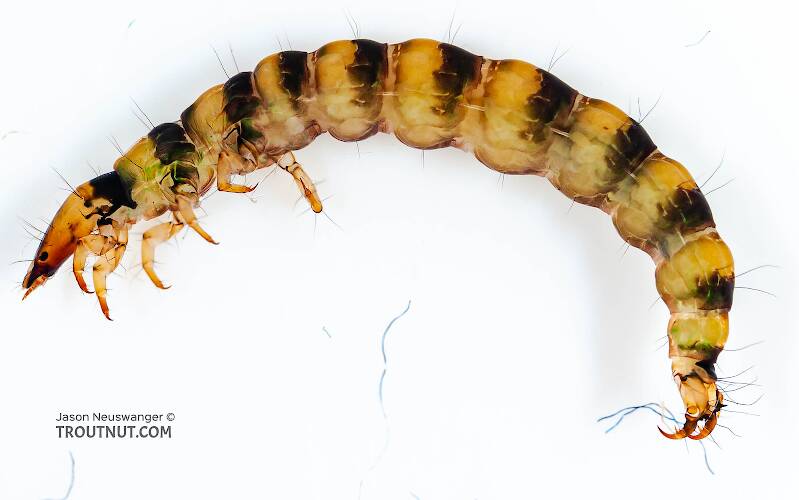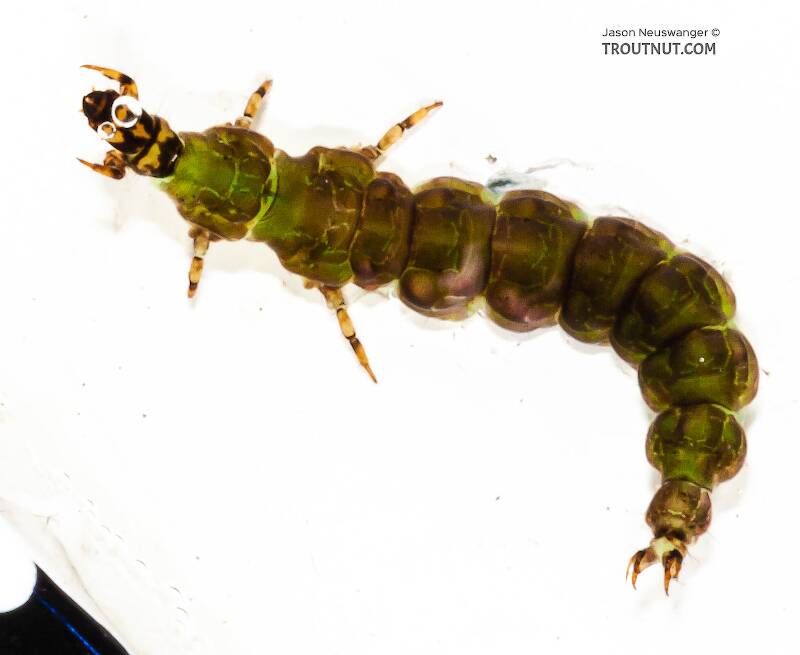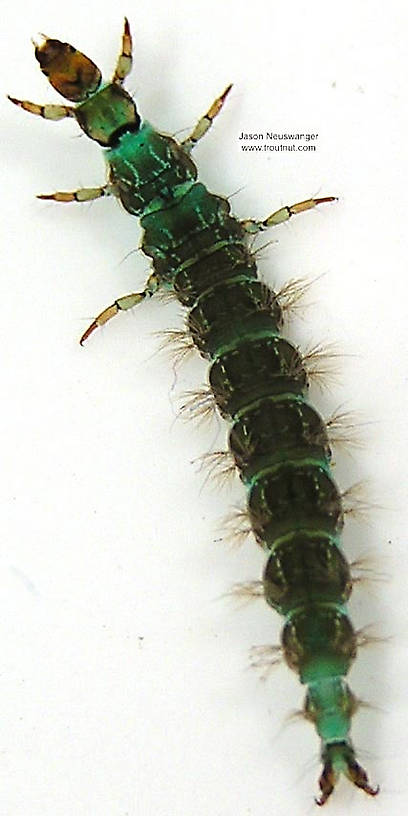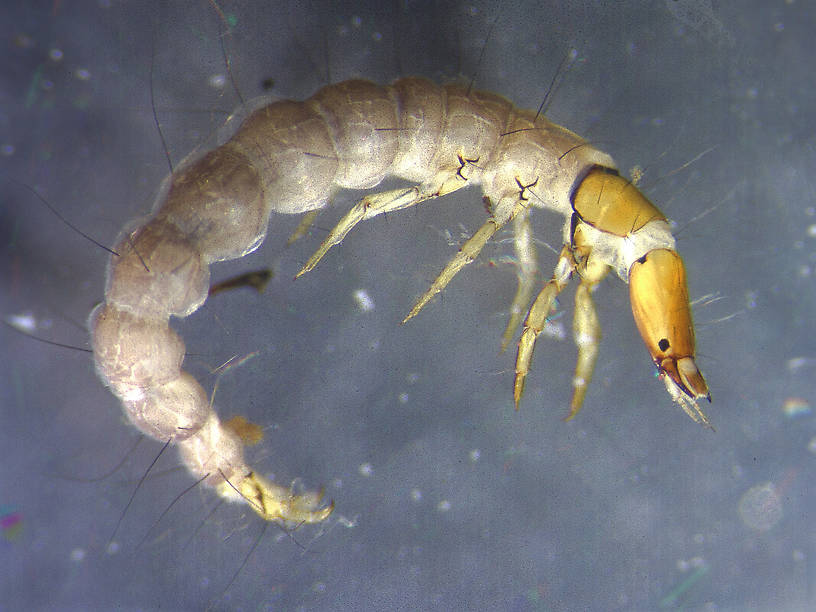
Blue-winged Olives
Baetis
Tiny Baetis mayflies are perhaps the most commonly encountered and imitated by anglers on all American trout streams due to their great abundance, widespread distribution, and trout-friendly emergence habits.


Caddisfly Genus Rhyacophila (Green Sedges)
Where & when
In 1213 records from GBIF, adults of this genus have mostly been collected during June (24%), July (21%), May (19%), August (17%), September (7%), and April (5%).
In 610 records from GBIF, this genus has been collected at elevations ranging from 10 to 23622 ft, with an average (median) of 3652 ft.
Genus Range
Hatching behavior
Habitat: Riffles
Egg-Laying behavior
Habitat: Riffles
Larva & pupa biology
Diet: For most species, other aquatic insects.
Current speed: Fast
Environmental tolerance: Most species require cool water
Shelter type: No case
Many of these larvae have no gills at all and rely on absorbing oxygen from the water through their skin. Only cold water and fast flows can meet these needs, so Rhyacophila caddisflies love the same habitat as trout.
The larvae may rappel between the rocks on a line of brown silk they secrete. This can be imitated by coloring the last foot or so of one's leader with a brown marker.
Identification
To determine whether a specimen of Rhyacophilidae belongs to Rhyacophila, use the Key to Genera of Rhyacophilidae Adults.
Rhyacophila Fly Fishing Tips
Gary LaFontaine wrote some good tips in Caddisflies about fishing appropriate flies for the water you're covering:A good imitaiton of a Rhyacophila larva is going to catch a lot of trout in swift, bouncing stretches of stream. The same fly is going to do poorly in slow areas of the same stream.
A fly fisherman can avoid wasting time in the wrong sections of a stream by working leap-frog fashion instead of in a straight line. If he is using an imitaiton of a fast-water insect he should fish only the swift, broken currents, skipping past the slower current areas. Likewise, if he is using an imitation of a slow-water insect he should only cover the quieter pools and flats.
He was speaking about fishing Rhyacophila imitations, but the advice is equally applicable to many aquatic insects. He cautions against using these imitations where the real insects are not abundant in the drift, because they are otherwise too large and bright to seem realistic.
Specimens of the Caddisfly Genus Rhyacophila
1 Adult
3 Pupae
9 Larvae
Start a Discussion of Rhyacophila
References
- LaFontaine, Gary. 1981. Caddisflies. The Lyons Press.
- Schwiebert, Ernest G. 1955. Matching the Hatch. MacMillan Publishing Company.
- Swisher, Doug and Carl Richards. 2000. Selective Trout. The Lyons Press.

